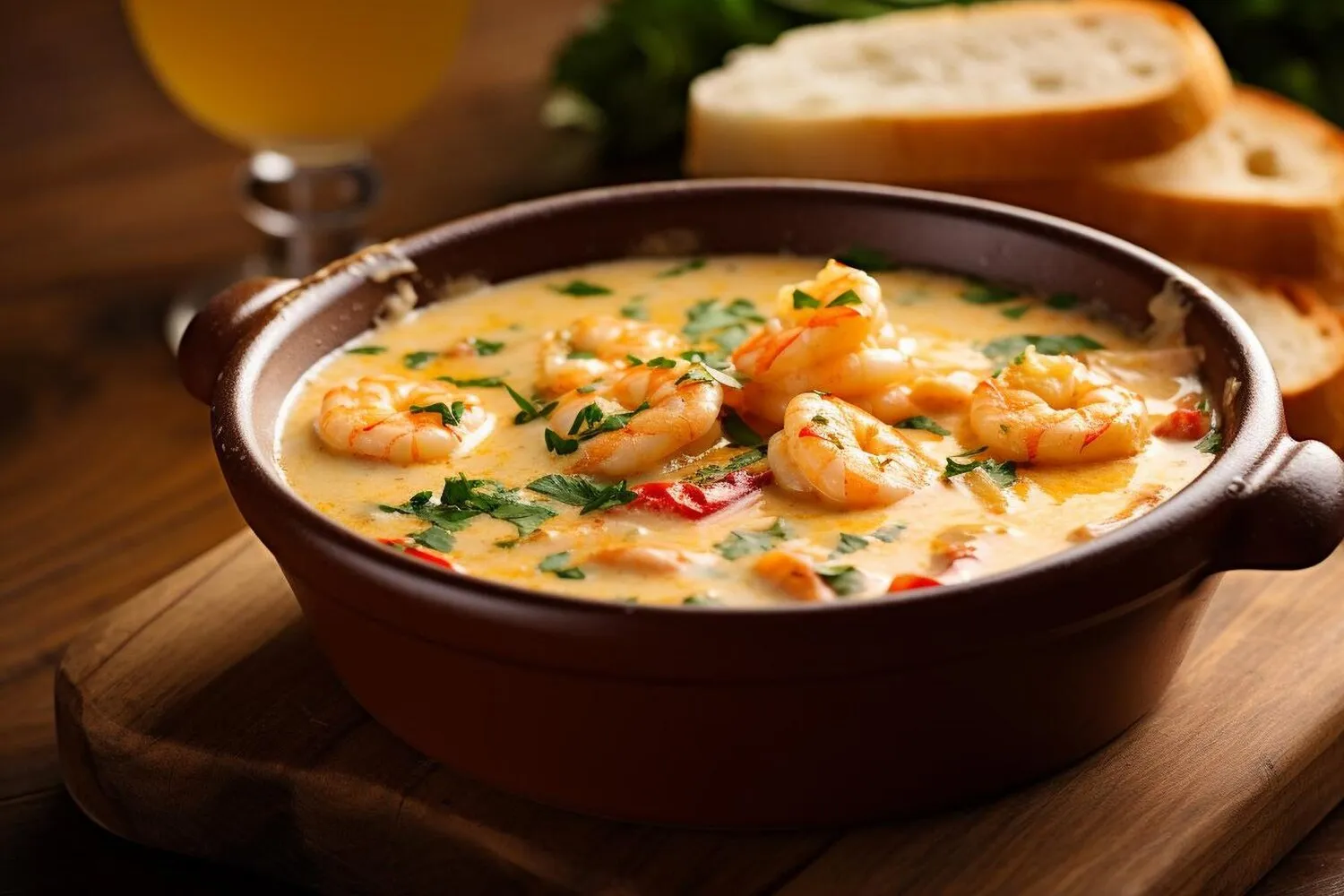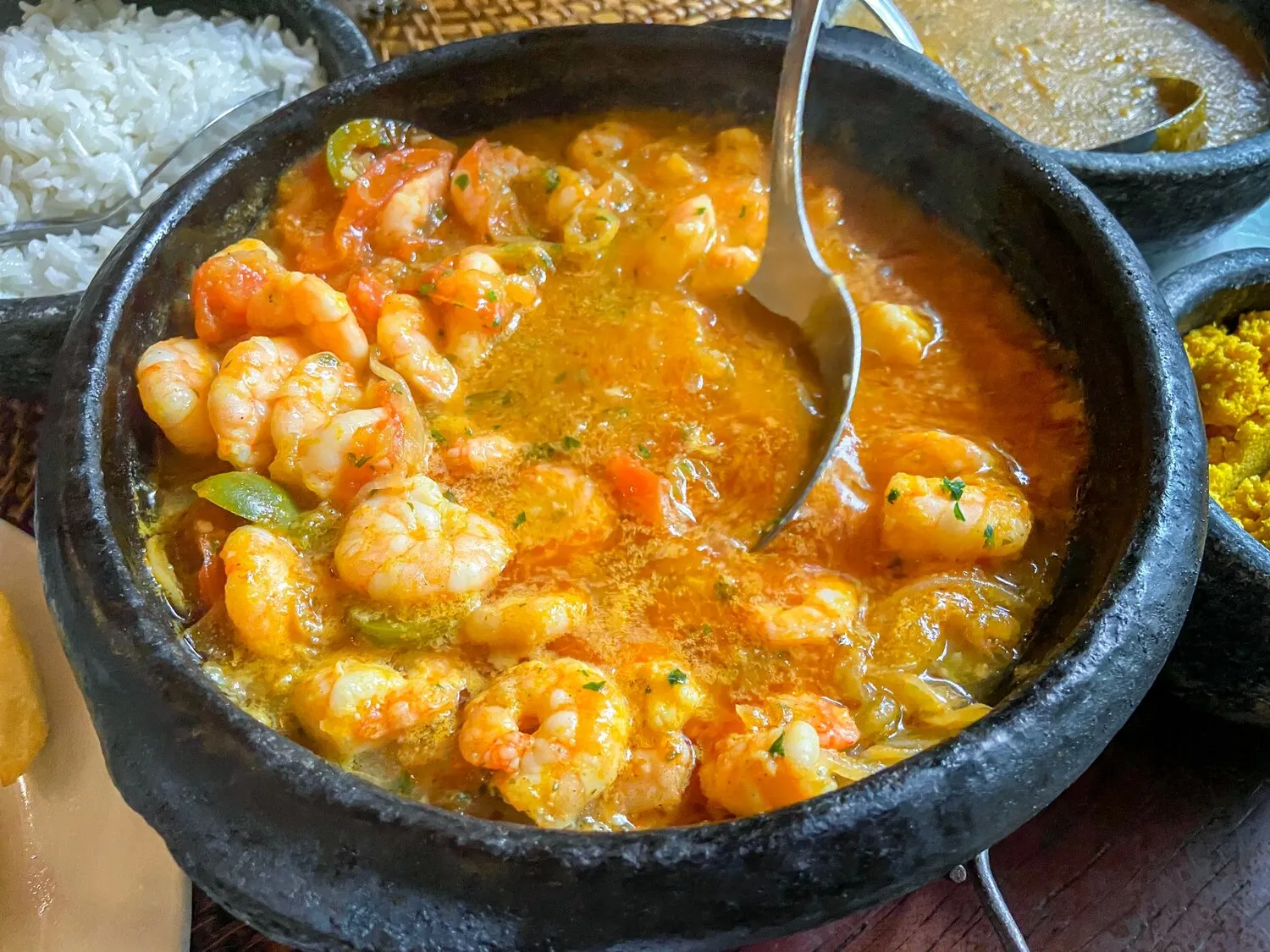
Moqueca Baiana
A classic Bahian seafood stew cooked in coconut milk, tomatoes, peppers, and cilantro.
Nutrition Facts
* The % Daily Value (DV) tells you how much a nutrient in a serving of food contributes to a daily diet. 2,000 calories a day is used for general nutrition advice.
Sexto Sentido
Moqueca Baiana's origins are deeply rooted in the fusion of Indigenous, African, and Portuguese culinary traditions in Bahia, Brazil. Indigenous cooking techniques, such as cooking in clay pots, were combined with African ingredients like coconut milk and palm oil (dendê), and Portuguese influences like tomatoes and peppers, to create this iconic stew.
Moqueca Baiana is more than just a dish; it's a symbol of Bahian culture and hospitality, often served during celebrations and family gatherings. It represents the rich history and diverse influences that have shaped the region's cuisine.
Bahian Identity
Moqueca Baiana is a staple food in Bahia, and it is closely tied to the region's cultural identity. It is often prepared and enjoyed during special occasions, reinforcing community bonds.
Family Gatherings
Sharing Moqueca Baiana is a communal experience. It is traditionally served in a large clay pot at the center of the table, encouraging sharing and conversation among family and friends.
Regional Variations
While Moqueca Baiana is the most famous version, there's also Moqueca Capixaba, which doesn't use dendê oil or coconut milk and is considered a lighter, more delicate version.
Moqueca Baiana boasts a vibrant and rich flavor profile, characterized by the sweetness of coconut milk, the acidity of tomatoes, the subtle heat of peppers, and the aromatic freshness of cilantro.
The dominant flavor is the creamy sweetness of coconut milk, which balances the acidity of the tomatoes and the subtle heat of the peppers. Dendê oil (palm oil) contributes a unique earthy and slightly nutty flavor, along with a distinctive orange color. Seafood, usually a mix of fish and shellfish, adds a savory and briny element. Cilantro provides a fresh, herbaceous note that brightens the entire dish.
Use Fresh Ingredients
The quality of the ingredients is paramount. Opt for the freshest seafood, ripe tomatoes, and fragrant cilantro. Fresh coconut milk will provide the best flavor.
Gentle Cooking
Cook the moqueca over low heat to prevent the seafood from becoming tough and to allow the flavors to meld slowly and develop depth.
Clay Pot Advantage
While not essential, cooking the moqueca in a traditional clay pot (panela de barro) enhances the flavor and helps retain heat. If a clay pot isn't available, a heavy-bottomed pot is a good substitute.
Seasoning Properly
Taste and adjust the seasoning as you go. The balance between the sweet coconut milk, acidic tomatoes, and spicy peppers is key. Salt and pepper are crucial.
Explore additional Bahian Cuisine dishes and restaurants
Explore Bahian CuisineDiscover top dining spots and culinary experiences in Vitória da Conquista.
Explore Vitória da ConquistaLearn more about the food culture, restaurant scene, and culinary heritage of Brazil.
Explore Brazil
